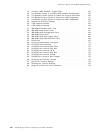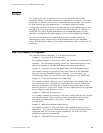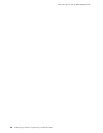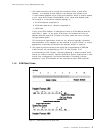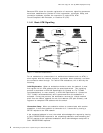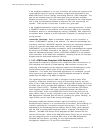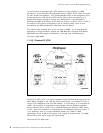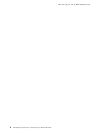
This soft copy for use by IBM employees only.
1.1.2 ATM Connections
ATM, being session-oriented, requires that a path through the network be
determined and maintained for the duration of the session. This path is
comprised of
virtual channel links
(switch-to-switch connections), which are
linked together to form a
virtual channel connection
(VCC) (end-to-end
connection), which are aggregated into
virtual paths
(VP). Just like a virtual
channel (VC), a virtual path can be a
virtual path link
(switch-to-switch
connection) or a
virtual path connection
(VPC) (end-to-end connection). More
importantly, a virtual path can be switched to a new route (to avoid congestion
or a failure) without affecting or individually processing the VCs it contains.
Connections through the network can be either fixed and pre-determined, or can
be defined dynamically through a signalling protocol. A pre-determined path,
defined by the network operator, is called a
permanent virtual connection
(PVC),
while a dynamically determined temporary path is called a
switched virtual
connection
(SVC). In either case, a connection will be implemented only if there
is adequate capacity in the network to meet the requisite end-to-end bandwidth
and Quality of Service (QoS) parameters, or if an existing connection can be
preempted to make it possible to meet bandwidth and QoS requirements.
1.1.3 ATM Addressing
Figure 1. ATM Addressing Format Cell
An ATM address consists of two parts: a 13-byte network prefix and a 7-byte
terminal identifier (consisting of a 6-byte
end station identifier
(ESI), and a 1-byte
selector
field). Further information on specific requirements for ATM addressing
can be found in
IBM 8285 Nways ATM Workgroup Switch: Installation and User
′
s
Guide
and in ISO-8348 (CCITT X.213). Of specific relevance to us, are the
following addressing restrictions:
2 ATM Workgroup Solutions: Implementing the 8285 ATM Switch



